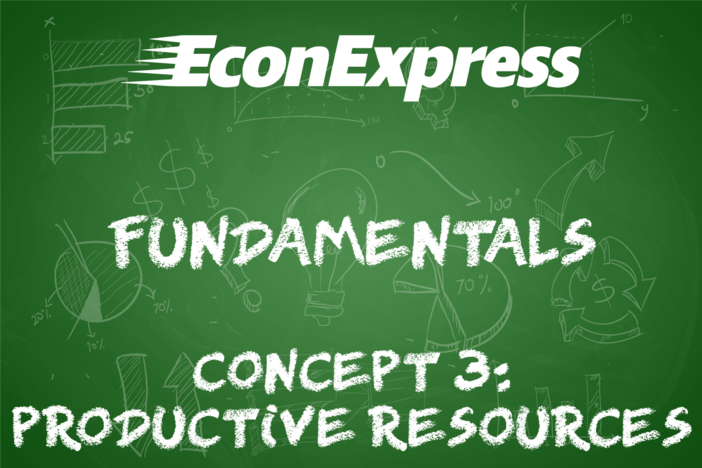Concept 10: Economic and Social Goals
Overview: Which economic system is "better?" The answer depends on what the goals of a society are. In this lesson, you will learn about a variety of goals and how different systems prioritize those goals.
Learn
Beginner

Economic policies are created for to achieve certain goals. Broadly speaking, economic systems strive to achieve some combination of these seven goals:
- Economic Freedom: the degree to which producers and consumers can make their own choices in the market place
- Economic Equity: the degree to which opportunities to succeed are equal for everyone OR the degree to which everyone has an equal share of select goods, services, or resources
- Economic Security: the degree to which certain goods and services (usually employment/income, healthcare, and housing) are guaranteed to citizens by the government
- Economic Growth: the degree to which the overall production of goods and services in the economy is increasing (real GDP)
- Economic Efficiency: the degree to which productive resources are being used in the best possible method given the demand for goods and services
- Price Stability: the degree to which price changes are predictable and moderate
- Full Employment: the degree to which individuals who are able and willing to work can find jobs even when not guaranteed
- Economic Sustainability: the degree to which economic growth can be replicated and maintained in the long run given the environmental, financial, technological, and societal limitations of the country
It is important to recognize that certain goals are in direct conflict with each other (freedom and security) and others are difficult to achieve simultaneously (equity and growth). In these cases, economic systems must prioritize goals. The process of prioritizing goals is typically the source of many political controversies.
Intermediate

A nation’s economic system indicates which goals are prioritized. Market economies tend to favor economic freedom, efficiency and growth (with full employment being a desirable side effect of these choices). Since free markets encourage competition and negotiation, other goals like equity, security, price stability and economic sustainability are sometimes sacrificed.
While all economic goals may require some government intervention some of the time, equity, security, stability, and even sustainability often require more attention. These goals tend to be more in line with command economy policies, even if they are not actually achieved in those economies.
Advanced

Priorities can change over time, sometimes quickly. Cuba, for example, in the 1940s and part of the 1950s, yielded great economic freedom and had a large wealth gap. Within two years of Castro’s takeover, however, farmland across the country had been redistributed; the national tourism office had been taken over; and rents and home prices were controlled by the government. This indicated a severe shift in priorities, from freedom to equity and security. Not all priority shifts are so drastic. In the United States, there are perennial debates over minimum wage laws, government regulations, environmental concerns, banking and investment practices, and the overall role of government in the economy. Each of these issues has one of the economic goals at its core, and every election can shift local, state and national priorities.
Click a reading level below or scroll down to practice this concept.
Practice
Assess
Below are five questions about this concept. Choose the one best answer for each question and be sure to read the feedback given. Click “next question” to move on when ready.
Social Studies 2024
Analyze how command, market and mixed economic systems answer the three basic economic questions (what to produce, how to produce, and for whom to produce) to prioritize various social and economic goals such as freedom, security, equity, growth, efficiency, price stability, full employment, and sustainability.














